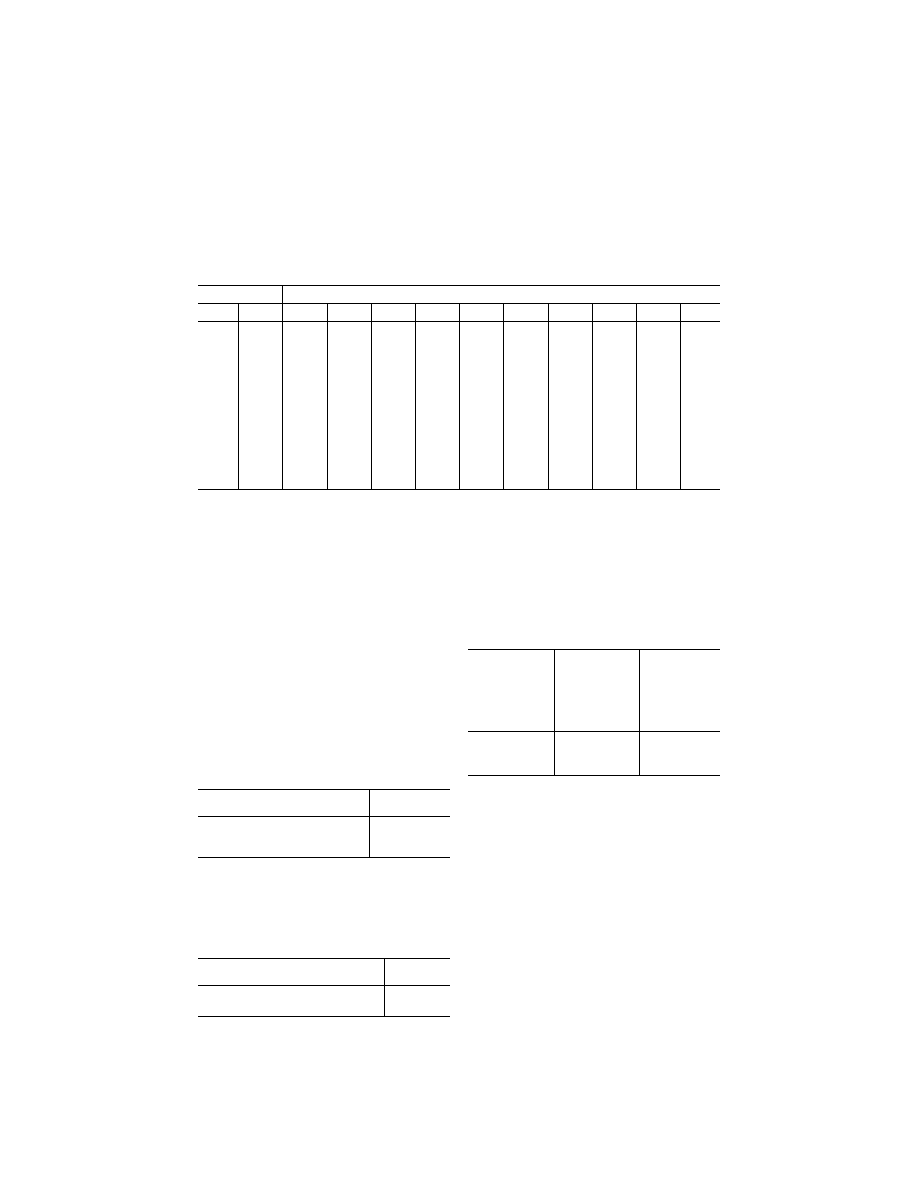
459
Federal Aviation Administration, DOT
Pt. 25, App. O
T
ABLE
2.—F
LIGHT
L
ENGTH
D
ISTRIBUTION
—Continued
Flight length (NM)
Airplane maximum range—nautical miles (NM)
From To 1000 2000 3000 4000 5000 6000 7000 8000 9000 10000
7000
7200 0.0 0.0 0.0 0.0 0.0 0.0 0.0 0.4 0.7 0.8
7200
7400 0.0 0.0 0.0 0.0 0.0 0.0 0.0 0.3 0.5 0.7
7400
7600 0.0 0.0 0.0 0.0 0.0 0.0 0.0 0.2 0.5 0.6
7600
7800 0.0 0.0 0.0 0.0 0.0 0.0 0.0 0.1 0.5 0.7
7800
8000 0.0 0.0 0.0 0.0 0.0 0.0 0.0 0.1 0.6 0.8
8000
8200 0.0 0.0 0.0 0.0 0.0 0.0 0.0 0.0 0.5 0.8
8200
8400 0.0 0.0 0.0 0.0 0.0 0.0 0.0 0.0 0.5 1.0
8400
8600 0.0 0.0 0.0 0.0 0.0 0.0 0.0 0.0 0.6 1.3
8600
8800 0.0 0.0 0.0 0.0 0.0 0.0 0.0 0.0 0.4 1.1
8800
9000 0.0 0.0 0.0 0.0 0.0 0.0 0.0 0.0 0.2 0.8
9000
9200 0.0 0.0 0.0 0.0 0.0 0.0 0.0 0.0 0.0 0.5
9200
9400 0.0 0.0 0.0 0.0 0.0 0.0 0.0 0.0 0.0 0.2
9400
9600 0.0 0.0 0.0 0.0 0.0 0.0 0.0 0.0 0.0 0.1
9600
9800 0.0 0.0 0.0 0.0 0.0 0.0 0.0 0.0 0.0 0.1
9800
10000 0.0 0.0 0.0 0.0 0.0 0.0 0.0 0.0 0.0 0.1
(c) Overnight Temperature Drop. For air-
planes on which FRM is installed, the over-
night temperature drop for this appendix is
defined using:
(1) A temperature at the beginning of the
overnight period that equals the landing
temperature of the previous flight that is a
random value based on a Gaussian distribu-
tion; and
(2) An overnight temperature drop that is
a random value based on a Gaussian distribu-
tion.
(3) For any flight that will end with an
overnight ground period (one flight per day
out of an average number of flights per day,
depending on utilization of the particular
airplane model being evaluated), the landing
outside air temperature (OAT) is to be cho-
sen as a random value from the following
Gaussian curve:
T
ABLE
3.—L
ANDING
O
UTSIDE
A
IR
T
EMPERATURE
Parameter
Landing outside
air temperature
°
F
Mean Temperature ..................................
58.68
negative 1 std dev ...................................
20.55
positive 1 std dev ....................................
13.21
(4) The outside ambient air temperature
(OAT) overnight temperature drop is to be
chosen as a random value from the following
Gaussian curve:
T
ABLE
4.—O
UTSIDE
A
IR
T
EMPERATURE
(OAT)
D
ROP
Parameter
OAT drop
temperature
°
F
Mean Temp ...................................................
12.0
1 std dev ........................................................
6.0
(d) Number of Simulated Flights Required
in Analysis. In order for the Monte Carlo
analysis to be valid for showing compliance
with the fleet average and warm day flam-
mability exposure requirements, the appli-
cant must run the analysis for a minimum
number of flights to ensure that the fleet av-
erage and warm day flammability exposure
for the fuel tank under evaluation meets the
applicable flammability limits defined in
Table 5 of this appendix.
T
ABLE
5.—F
LAMMABILITY
E
XPOSURE
L
IMIT
Minimum number of
flights in Monte
Carlo analysis
Maximum
acceptable Monte
Carlo average fuel
tank flammability
exposure
(percent) to meet
3 percent
requirements
Maximum
acceptable Monte
Carlo average fuel
tank flammability
exposure
(percent) to meet
7 percent part 26
requirements
10,000 ....................
2.91 6.79
100,000 ..................
2.98 6.96
1,000,000 ...............
3.00 7.00
[Doc. No. FAA–2005–22997, 73 FR 42495, July
21, 2008, as amended by Doc. No. FAA–2018–
0119, Amdt. 25–145, 83 FR 9169, Mar. 5, 2018]
A
PPENDIX
O
TO
P
ART
25—S
UPERCOOLED
L
ARGE
D
ROP
I
CING
C
ONDITIONS
This Appendix consists of two parts. Part I
defines this Appendix as a description of
supercooled large drop icing conditions in
which the drop median volume diameter
(MVD) is less than or greater than 40
µ
m, the
maximum mean effective drop diameter
(MED) of Appendix C of this part continuous
maximum (stratiform clouds) icing condi-
tions. For this Appendix, supercooled large
drop icing conditions consist of freezing driz-
zle and freezing rain occurring in and/or
below stratiform clouds. Part II defines ice
accretions used to show compliance with the
airplane performance and handling qualities
requirements of subpart B of this part.
VerDate Sep<11>2014
12:50 Apr 30, 2019
Jkt 247046
PO 00000
Frm 00469
Fmt 8010
Sfmt 8002
Y:\SGML\247046.XXX
247046
spaschal on DSK3GDR082PROD with CFR